Gardening in Montana
Spring is in the air, even with lingering snow. The tips of aspen trees are plump with budding leaves, spring bulbs are pushing through the ground, and gardeners are placing seed orders while tending to seedlings started indoors. By the time Montana’s short growing season commences, gardeners are bustling to make the most of the short and sweet growing season.
Fourteen years ago, while moving to Bozeman from Kansas City, I declared to my Dearest, “I’ll never have to garden again because everyone knows that wheat, potatoes, wildflowers, barley, and noxious weeds are the only things that grow in Montana.” Wrong!
It took a few years of Montana living to grasp the possibilities and discover the Montana Zen of Gardening: work with nature –don’t think you can control it. I am a lifelong gardener. I began cultivating flower and vegetable gardens as a toddler, thanks to a Northern California childhood overseen by a taskmaster Dad who insisted on growing everything that California’s climate and soil allowed. California is not Montana. I’ve lived many other places, and have amended literally tons of soil, planted more trees than imaginable, and pulled so many weeds that I began yoga just to counter balance the effects on my back. At one point, in Kansas City, I semi-jokingly considered forming a “Gardeners’ Anonymous” organization as I was incapable of passing a flat of zinnias or pansies stacked on a rolling cart outside the grocery store without lugging a few home. I figured in Montana I could retire from gardening and be content with my interaction with nature by simply watching the ever-changing sky, doing outdoor activities, and observing nature. Wrong again.
My fingers literally itched to be digging in the dirt, even knowing it was rocky. My eyes longed for flower beds framing our home. I began noting the array of thriving plants in both rural and urban yards. Driving into Philipsburg one Spring, I became intoxicated from the fragrance of lilacs. I never seen so many lilacs, at such improbable heights, heavy with vibrant blooms. Montana’s weather favors them and extends the bloom time. Reality dawned on me—there are plants that thrive in Montana just as there are people who thrive here. If you look at gardens, you’ll notice iris patches, fields of poppies, columbine clustered under trees, and old fashioned shrub roses blazing in red or yellow. Numerous vegetables prefer our cool nights and soil: spinach, carrots, peas, lettuces, beets, and green beans to name a few. Just don’t waste your time on tomatoes unless you are stubborn or wish to prove you can defy all odds.
Gardening in Montana has challenges. The zoning maps—which tell you how cold it gets as far as plant tolerances-- say Montana ranges from Zone 2 to a narrow slice of 6, with a majority of the state being a Zone 4. Don’t believe it. Montana is unpredictable. It can hail and snow in July.
Temperatures can drop a degree a minute and the soil can be so cold that roots shrivel. The winds have been known to crack a tree right down the middle. Then there are the critters. Most gardeners expect rabbits, squirrels, and deer. In Montana, there are elk. Big, voracious, mow-them-down-elk. And little, tiny awful voles. You see vole damage in lawns when the snows thaw and spaghetti-shaped mounds crisscross the lawns. Voles took out my entire first orchard in Montana, gnawing a circle around the diameter of every tender apple, pear, and cherry tree I had painstakingly planted. No one had instructed me that if you want an orchard you must wrap the base of the trees to thwart the pesky critters and then cage the trees with wire so the deer and elk are unable to shred branches.
A fellow gardener shared her adage on planting perennials here: “The first year they die, the second year some try, and the third year they thrive.” I often say, “Gardening in Montana is either an act of optimism or a sign of insanity. Sometimes it is both.” The key, I have discovered, is to pick plants that love it here. Build your garden around hardy, resourceful plants that can stand up to nature when it is being a bully. Use ground covers such as creeping thyme, sedum, and creeping phlox. Vines such as Virginia Creeper, Boston Ivy, and beautiful flowering clematis will take off and take over if you’re not careful. I am particularly fond of peonies and daylilies and now have countless varieties returning to greet me each spring. I offer this advice: look for plants that do well in Zone 3. If you insist on a temperamental, fussy plant, position it close to the shelter and warmth of your home, cover and coddle it, and don’t cry if one year it just gives up trying. When I notice a plant is struggling, I relocate it, as even a small garden in Montana has micro-climates.
I am into the seventh year of my current garden. It thrives, as does my soul. We harvest a bounty of vegetables starting with spring lettuce, I cut bouquets from my flower beds, and can Italian plums from the orchard. Far more than you imagine adapts to Montana growing conditions. Numerous blogs, books, and publications are geared to sharing knowledge about high altitude, Rocky Mountain gardening. I’ve found that gardeners tend to be generous people, willing to share their knowledge, divide up their plants to offer you some of their favorites, and direct you to their trusted growers. Now, time to finish up my seed order. I do love Lincoln peas.
 Sally Uhlmann is a real estate agent and co-owner of SU Platinum Real Estate residing in Bozeman, Montana. Since 2003, my family and I have enjoyed life in Montana. Throughout my life, there are constants: loving my family, friends, and community, enjoying trekking to remote places in the world, being involved in non-profits, gardening, and always cooking. Most of my clients end up at my house, enjoying fine wine and dining on organic vegetables straight from the garden, eggs from our chickens, and sunsets that rival any in the world. In my opinion, there is no place better than Bozeman, Montana.
Sally Uhlmann is a real estate agent and co-owner of SU Platinum Real Estate residing in Bozeman, Montana. Since 2003, my family and I have enjoyed life in Montana. Throughout my life, there are constants: loving my family, friends, and community, enjoying trekking to remote places in the world, being involved in non-profits, gardening, and always cooking. Most of my clients end up at my house, enjoying fine wine and dining on organic vegetables straight from the garden, eggs from our chickens, and sunsets that rival any in the world. In my opinion, there is no place better than Bozeman, Montana.
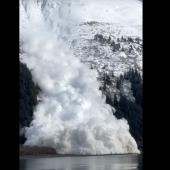
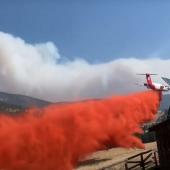


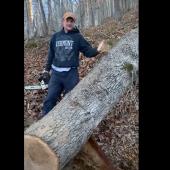


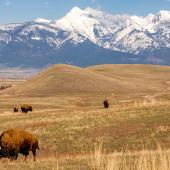
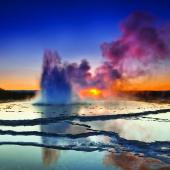
- Reply
Permalink